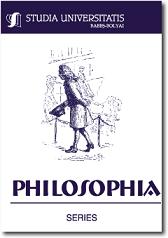„DAS ARBEITENDE TIER“ ZU M. HEIDEGGERS AUSLEGUNG DER ARBEIT IN DEN VORTRÄGEN UND AUFSÄTZEN (GA 7)
„THE WORKING ANIMAL”. ABOUT M. HEIDEGGER’S INTERPRETATION OF WORK IN HIS CONFERENCES AND ESSAYS
Author(s): Bogdan MincăSubject(s): Philosophy
Published by: Studia Universitatis Babes-Bolyai
Keywords: Heidegger; work; essence of man; reason (ratio); reality; activity; object.
Summary/Abstract: „The Working Animal”. About M. Heidegger’s Interpretation of Work in His Conferences and Essays. In this article, we will analyze Heidegger’s interpretation of work in his volume Conferences and Essays (Complete Works, vol. 7), the only volume published in his lifetime concerning the phenomenon of work (Arbeit). Heidegger’s main thesis is that man, understood in the Western tradition as the animal rationale, as the thinking being, has become now, in late modernity, the “working animal”. Thus, work is not an activity of man, i.e. a praxis (in contrast to a theoretical way of being), but the accomplishment and final stage of a long lasting history of the essence of man in the West. Work brings to the fore the very essence of reason: planing, arranging, calculating, and securing of reality. Reality itself reveals itself in modern times as object and stock, thus respoding to a tendency inherent in reason: to dispose assuredly and everlastingly of everything. Beginning with the Greeks, reason and reality are deeply connected by the central phenomenon of Stellen („bringing to stand”, gr. thesis).
Journal: Studia Universitatis Babes-Bolyai - Philosophia
- Issue Year: 58/2013
- Issue No: 1
- Page Range: 15-24
- Page Count: 10
- Language: German

